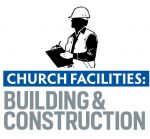Operation seminary: using your VA benefits for training
You’ve served your country faithfully. Now, you desire to serve the church more strategically.
How can you best use the VA benefits you’ve earned to get the biblical training you want?
You’ve served your country faithfully. Now, you desire to serve the church more strategically.
How can you best use the VA benefits you’ve earned to get the biblical training you want?

The synod headquarters office — being a central repository of a great deal of sensitive information — had taken security very seriously, in every possible regard. So, what went wrong?
Read More >Thousands of churches and religious organizations use CDs and DVDs as the primary means to distribute important content. It’s for good reason, too: CDs and DVDs are inexpensive to produce and user-friendly for even the least tech-savvy viewers and listeners — whether they’re at home, in the car or at the office.
Read More >
More than ever before, individuals are aligning their finances with their personal beliefs. The noted increase in charitable giving in the United States, as shown in recent findings from the National Center for Charitable Statistics, is a great example of this positive shift. But, individuals are not only trying to use their finances for good by helping others; they are investing in companies that align with their values, too. For example, last year, one out of every six dollars invested under professional management — $6.57 trillion or more — was invested in a socially conscious investment strategy, as reported in the 2014 Report on Sustainable, Responsible and Impact Investing Trends in the United States by US SIF: The Forum for Sustainable and Responsible Investment.
While the strategies go by various names — environmental, social and governance investing (ESG), socially responsible investing (SRI), biblically responsible investing (BRI), ethical investing, impact investing and many more — the goal of these fund managers is to reflect the beliefs of the investors they serve.
Read More >Congratulations! You and your congregation have made the decision to invest in new sanctuary seating.
Now what?
Read More >
Often, when a church decides it wants to build, the first step is to get a set of plans designed and then bid out with several contractors. Nearly every month, we encounter churches where — after bidding the plans — the project is over budget and cannot be completed.
Other church leaders tell us their buildings were built using this process … and yet they ended up spending a significant amount more than the contractor’s original bid.
You might ask how this could happen. The answer: cost overrun.
Read More >
In this installment, we’ll focus on three types of alternative site selection:
#1: Expansion on one site (current or new)
#2: Expansion on multiple sites
#3: Expansion through church planting or new starts